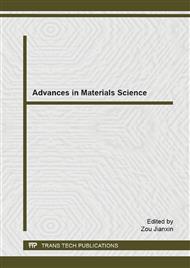p.135
p.140
p.144
p.148
p.153
p.159
p.164
p.169
p.174
Heat Transfer and Solidification Model of Slab Continuous Casting Based on Nail-Shooting Experiments
Abstract:
A heat transfer and solidification model of slab continuous casting process was developed, and the nail-shooting experiments were carried out to verify and improve the prediction accuracy. The comparison between the simulation and the measurements results showed that, there exists difference between the model predicted liquid core length and the calculated liquid core length according to the measurement results of the solidification shell thickness. In the present study, the value of constant a in the heat transfer coefficient calculation formula was corrected through back-calculation, results showed that, the suitable value of a is 31.650, 33.468 and 35.126 when the casting speed is 0.8m·min-1, 0.9m·min-1 and 1.0m·min-1 respectively, which can meet the liquid core length of the measurement results. The developed model built a foundation for the application of dynamic secondary cooling, and dynamic soft reduction.
Info:
Periodical:
Pages:
153-158
Citation:
Online since:
February 2015
Authors:
Price:
Сopyright:
© 2015 Trans Tech Publications Ltd. All Rights Reserved
Share:
Citation:


